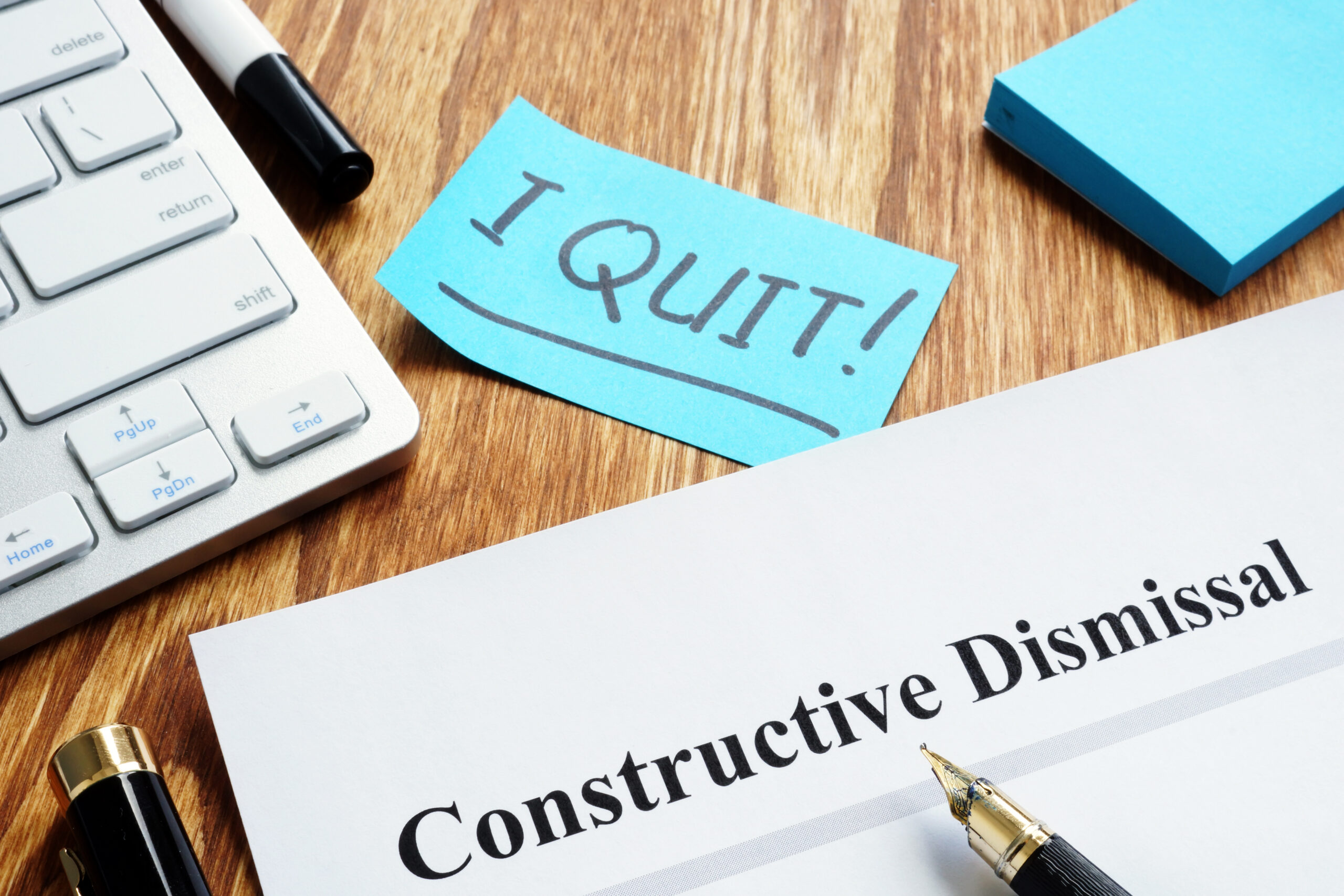Understanding Constructive Discharge
In my years as an employment attorney, one of the more nuanced and emotionally charged areas I’ve encountered is the concept of constructive discharge. Unlike a traditional firing, constructive discharge occurs when an employee resigns because their working conditions have become so intolerable that a reasonable person would feel compelled to quit. While this resignation may appear voluntary on paper, the law can treat it as a termination if the employer’s actions meet certain legal thresholds.
Constructive discharge straddles the line between resignation and termination, often leaving both employees and employers uncertain about rights, responsibilities, and risks. Understanding its legal framework and emotional context is critical to fostering a fair and functional workplace.
The Legal Landscape: Proving Constructive Discharge
Constructive discharge claims are challenging because they require the employee to prove that their resignation was not truly voluntary. The burden lies in showing that:
- The working conditions were objectively intolerable.
- The employer either intended to force the employee to resign or knowingly allowed such conditions to persist.
- A reasonable person in the employee’s position would have felt they had no choice but to resign.
These cases often arise from harassment, discrimination, retaliation, or significant changes in job duties or compensation. Importantly, the courts consider whether the employee attempted to use internal complaint mechanisms before quitting. Failing to do so can weaken a constructive discharge claim.
As legal practitioners, we must navigate these standards carefully, counseling our clients—whether employee or employer—on the strength of the facts and the importance of documentation.
Emotional Toll on Employees
The emotional experience of constructive discharge cannot be overstated. I’ve spoken with many clients who felt humiliated, gaslit, or forced to compromise their values before ultimately walking away. The psychological strain can mirror that of more overt forms of termination—especially when the departure was preceded by months or years of marginalization or subtle retaliation.
Constructive discharge is often the culmination of ongoing stressors: micromanagement, exclusion from key meetings, or being reassigned undesirable tasks. By the time someone resigns, they may feel defeated, isolated, and unsure whether the law will acknowledge what they’ve endured.
In such situations, validating the client’s emotional experience while providing honest legal guidance is key. It’s also why preventative strategies—open communication, respectful HR practices, and internal checks—are so critical.
Employer Blind Spots and Prevention
From an employer’s perspective, constructive discharge is often an unintended outcome of poor leadership or unchecked workplace culture. The issue isn’t always a single “smoking gun,” but rather a pattern of behavior that erodes morale and dignity over time.
Many managers, unintentionally or otherwise, may engage in conduct that creates hostile conditions: favoritism, arbitrary discipline, or failure to address complaints. I’ve worked with organizations where the leadership team wasn’t even aware of how their policies were being implemented on the ground—or how toxic the environment had become for certain employees.
Preventative steps include:
- Training supervisors on the legal and emotional aspects of constructive discharge.
- Encouraging early intervention through safe and responsive HR channels.
- Monitoring patterns of attrition, complaints, and employee feedback.
- Auditing performance management systems to ensure fairness and consistency.
When employers are proactive, they not only avoid liability—they also retain talent and build trust.
Settlements and Outcomes
Constructive discharge claims can lead to litigation, but they often resolve through negotiated settlements, especially when coupled with other claims like discrimination or retaliation. Damages may include lost wages, emotional distress, and in some cases, punitive damages.
In my experience, these settlements often reflect not just the financial harm but also the relational breach. Employees want to be heard. Employers want closure without admission of wrongdoing. The legal resolution is only part of the healing process.
It’s important for all parties to approach these cases with empathy, strategy, and a long-term view. For employers, settling doesn’t mean weakness—it can signify a commitment to accountability and growth.
The Bigger Picture: A Call for Workplace Integrity
Constructive discharge teaches us something deeper about the workplace: that respect and transparency are essential to organizational health. A job should not become a source of persistent harm. And yet, many employees quietly suffer, afraid of retaliation or unsure whether their concerns will be taken seriously.
As attorneys, we have a unique opportunity to bridge that gap. We must help our clients—on both sides—understand not just the law, but the human stories behind it. By doing so, we foster workplaces that don’t just comply with the law but embody fairness, dignity, and mutual respect.
Final Thoughts
The quiet exit of constructive discharge may not make headlines, but it leaves deep marks—legally, emotionally, and organizationally. For employees, it can feel like a last resort. For employers, it can serve as a wake-up call. For legal practitioners, it reminds us that justice isn’t just about outcomes in court—it’s about guiding people through moments of profound difficulty with clarity and care.
As the workplace continues to evolve, so too must our understanding of what it means to truly protect the rights of those within it. Constructive discharge, in its quiet urgency, demands that we listen—before it’s too late.
